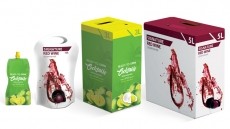Fortified food may aid Malaysian folate deficiency
their risk of having children with birth defects, says an
independent study sponsored by dairy group Fonterra.
Only 15 per cent of 399 Malaysian women tested had enough red cell folate in their bodies to ensure a low risk of neural tube defects in babies, found independent researchers from New Zealand's Otago University and Malaysia's Universiti Putra Malaysia.
The study, set to be published in the Asian Pacific Journal of Clinical Nutrition, was funded by Fonterra Brands, an arm of New Zealand's leading dairy co-operative Fonterra.
The firm backed the study to support the marketing of its ANMUM pregnancy milk brand - fortified with folate and specifically targetted at pregnant women.
"Malaysia is the biggest market globally for ANMUM, with sales increasing by 30 per cent over the past three years," said Joanne Todd, Fonterra Brands Health Platform Manager.
Several studies have linked low folate intake during pregnancy to birth defects, including Spina Bifida - a form of neural tube defect.
Hospital reports from Malaysia estimated that neural tube defects occurred at a rate of around 10 in every 10,000 births in the country. The rate in the US is thought to be around 3 cases per 10,000 births.
Professor Geok Lin Khor, of Universiti Putra Malaysia, said: "Our study found a definite need to improve the consumption of folate and blood folate status of Malaysian women of childbearing age."
He said there were "a range of options" available to do this, such as fortifying selected foods with folic acid or encouraging women of childbearing age to take folic acid supplements.
Malaysians could also change their cooking habits, according to Khor, who found Chinese and Indian women had significantly higher red blood cell folate levels.
"Folate is lost in prolonged cooking. The Chinese style of cooking usually entails quick stir-frying of leafy green vegetables and legumes, which are good folate sources.
"As for the Indians, they normally consume relatively high amounts of lentils and chickpeas, and even though these legumes tend to be over-cooked, the folate content in cooked legumes remain quite high, according to food composition tables."













